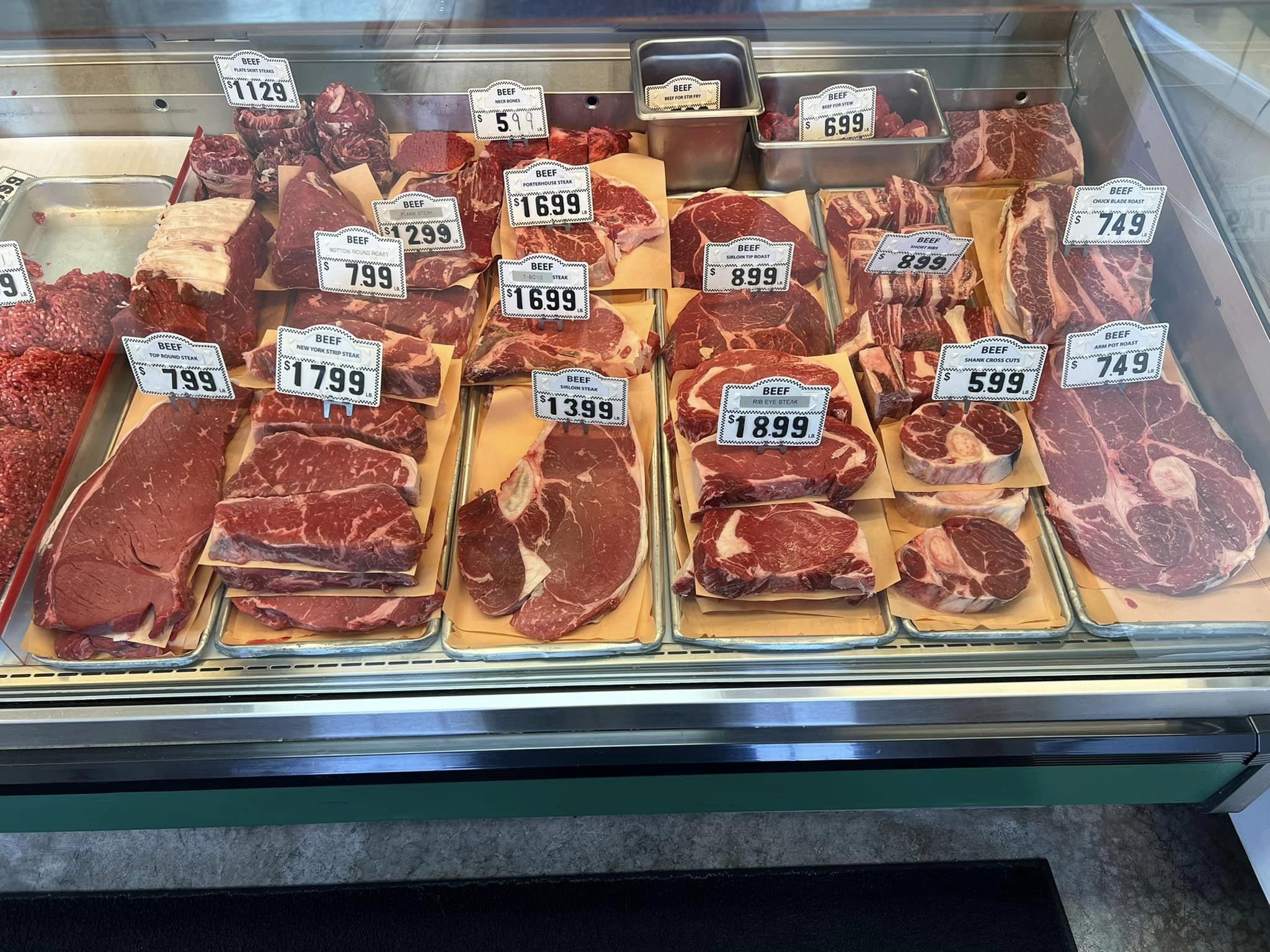Why Locals Love Bagley Farms Meat Market Edwardsville IL for Their Meat Buying
Why Locals Love Bagley Farms Meat Market Edwardsville IL for Their Meat Buying
Blog Article
Discover the Art of the Butcher's Cut in a Modern Meat Market
In the ever-evolving landscape of modern-day meat markets, the butcher's cut has actually transcended its traditional roots, combining old-time craftsmanship with modern practices. Today's butchers are not just cpus of meat; they are well-informed craftsmens who stress sustainability and honest sourcing. Their expertise in picking and preparing cuts tailored to particular culinary demands provides an unequaled dining experience. Yet, what really establishes the modern butcher apart is their capacity to forge a much deeper connection in between consumers and the origins of their meat. Just how do these masters equilibrium custom with development, and what effects does this have for the future of meat usage?
Advancement of Butchery Techniques
The advancement of butchery strategies shows a rich tapestry of development and adjustment driven by developments in modern technology, changes in customer need, and a deeper understanding of meat science. Historically, butchery was a craft passed down via generations, with approaches honed over centuries to take full advantage of return and taste. The industrial change ushered in mechanization, changing traditional techniques and making it possible for massive handling.
The mid-20th century saw butchery methods better refined by clinical insights right into muscle biology and meat aging, enhancing both tenderness and preference. Technologies like vacuum product packaging and refrigeration expanded product shelf-life, allowing butchers to branch out offerings and enhance quality assurance. This duration likewise marked the rise of specific devices, such as band saws and meat slicers, which raised precision and effectiveness in meat handling.

The 21st century has presented digital technology right into the butchery world. Computerized systems currently assist in tracking animal provenance and enhancing cuts to satisfy particular consumer preferences. Additionally, a revival in artisanal butchery has actually arised, mixing standard skills with modern expertise to provide to customers looking for ethical and sustainable meat choices. This advancement emphasizes a dynamic interplay in between custom and technology, conference contemporary demands while preserving the craft's heritage.
Recognizing Meat Cuts
Recognizing the intricacies of meat cuts is necessary for both butchers and customers looking for top quality and worth. For butchers, specific cuts mirror skill and respect for the craft, ensuring marginal waste and ideal yield.

Comprehending muscle composition is important; muscle mass utilized more regularly by the pet often tend to be tougher and are best fit for sluggish food preparation techniques, while less-used muscular tissues, like those found in the loin, are much more tender and ideal for barbecuing or roasting. Familiarity with these distinctions empowers consumers to make enlightened choices, improving their culinary endeavors.
Picking Quality Meat
Picking the right meat includes even more than simply choosing a discover this visually enticing item from the display screen. The art of picking quality meat calls for a critical eye and expertise of certain attributes that indicate freshness and excellence.
Secondly, take into consideration the marbling, which refers to the white streaks of fat within the muscle mass. Appropriate marbling is a key sign of inflammation and taste, as it thaws throughout food preparation, enhancing the meat's juiciness. Remember, greater marbling frequently correlates with superior high quality cuts, such as USDA Prime.
Appearance is one more vital element; meat should really feel firm to the touch, not slimed or overly soft. In addition, be mindful of the scent. Fresh meat ought to have a clean, neutral smell, free from any sour or off-putting smells.
Coupling Cuts With Cooking Techniques

Conversely, harder cuts like brisket and chuck roast are rich in collagen, which damages down right into jelly when cooked gradually. These cuts are perfect for braising or slow roasting, enabling the meat to tenderize in time and create deep, complicated tastes. Cuts such as short ribs and pork shoulder get on well with slow-cooking methods, where extended cooking times transform their robust appearances into delicious recipes.
Lamb shanks and oxtail, which call for extended cooking to soften, are excellent prospects for stewing or slow simmering. These approaches coax out abundant, passionate flavors while preserving dampness. By recognizing the unique qualities of each cut, chefs and home cooks alike can elevate their culinary developments, guaranteeing each recipe is both satisfying and unforgettable.
The Butcher's Role Today
Browsing the advancing landscape of the contemporary more information meat market, the butcher's duty today prolongs beyond mere preparation of cuts. Contemporary butchers are culinary craftsmens, instructors, and supporters for sustainable methods.
In enhancement to crafting precise cuts, butchers currently involve straight with consumers, offering cooking suggestions and customizing selections to fit individual requirements and choices. Their proficiency in meat aging, marbling, and flavor accounts equips consumers to make enlightened choices, boosting their culinary experiences. This individualized service exhibits the butcher's advancing duty as a relied on advisor in the kitchen.
In addition, butchers are critical in reducing waste, using entire animals to create varied products such as sausages and stocks. This extensive strategy not just appreciates the animal yet also aligns with modern sustainability goals. By doing this, the contemporary butcher embodies both tradition and innovation, adjusting to an ever-changing market while preserving the artistry and stability of their craft.
Verdict
Proficiency in comprehending varied meat cuts and high quality indications empowers butchers to provide enlightened suggestions, aligning details cuts with optimum food preparation approaches. By honoring historic methods while embracing contemporary demands, the butcher's function stays vital in today's innovative meat market.
Report this page